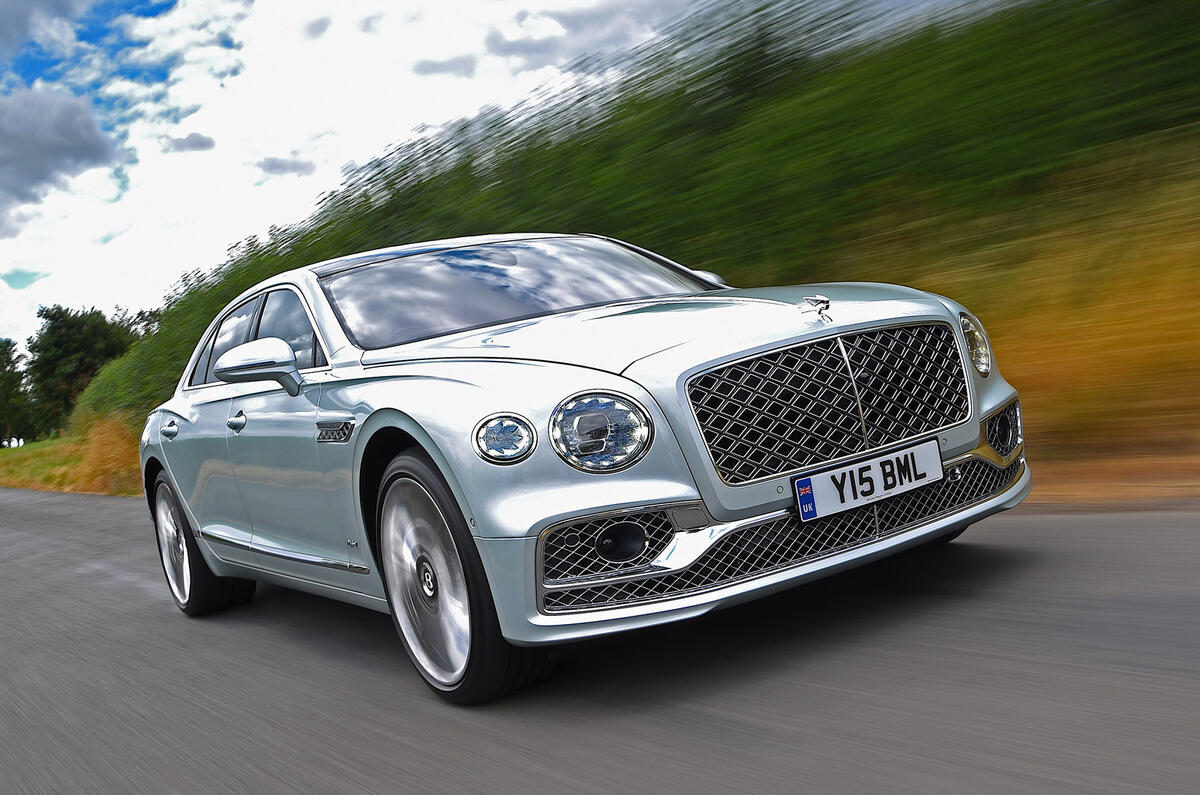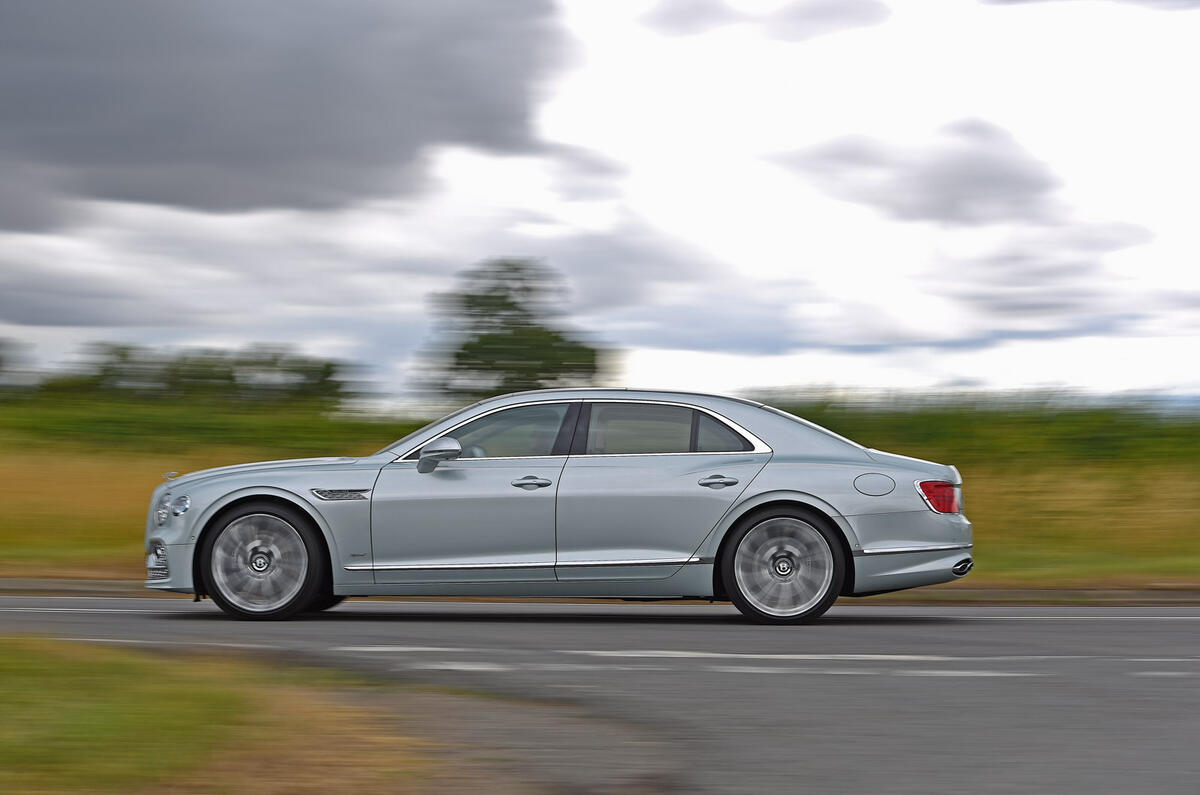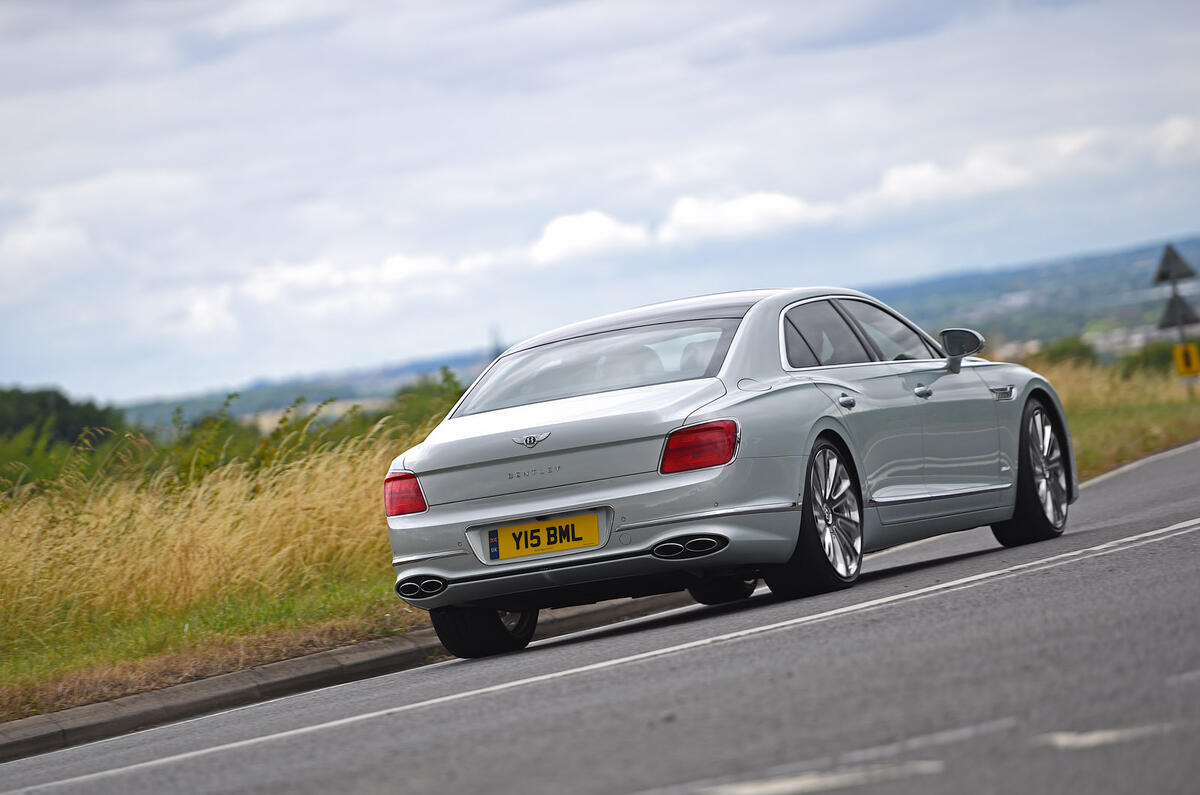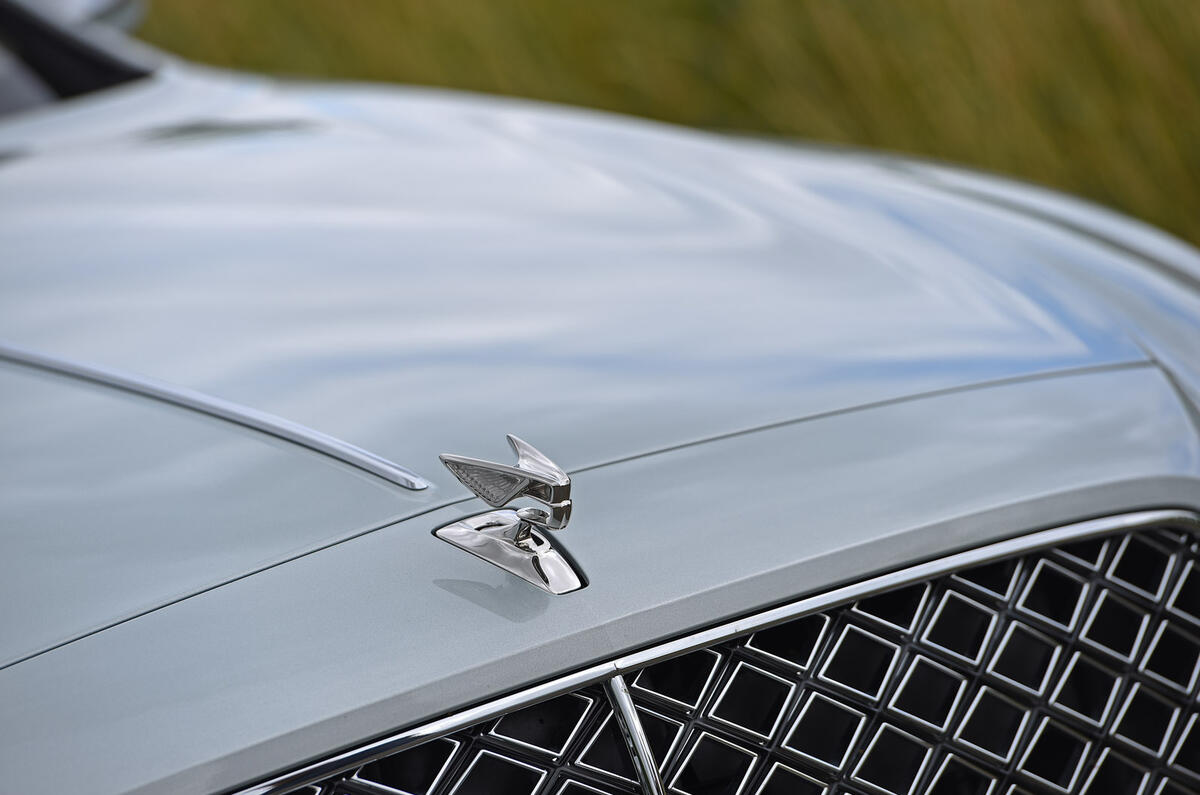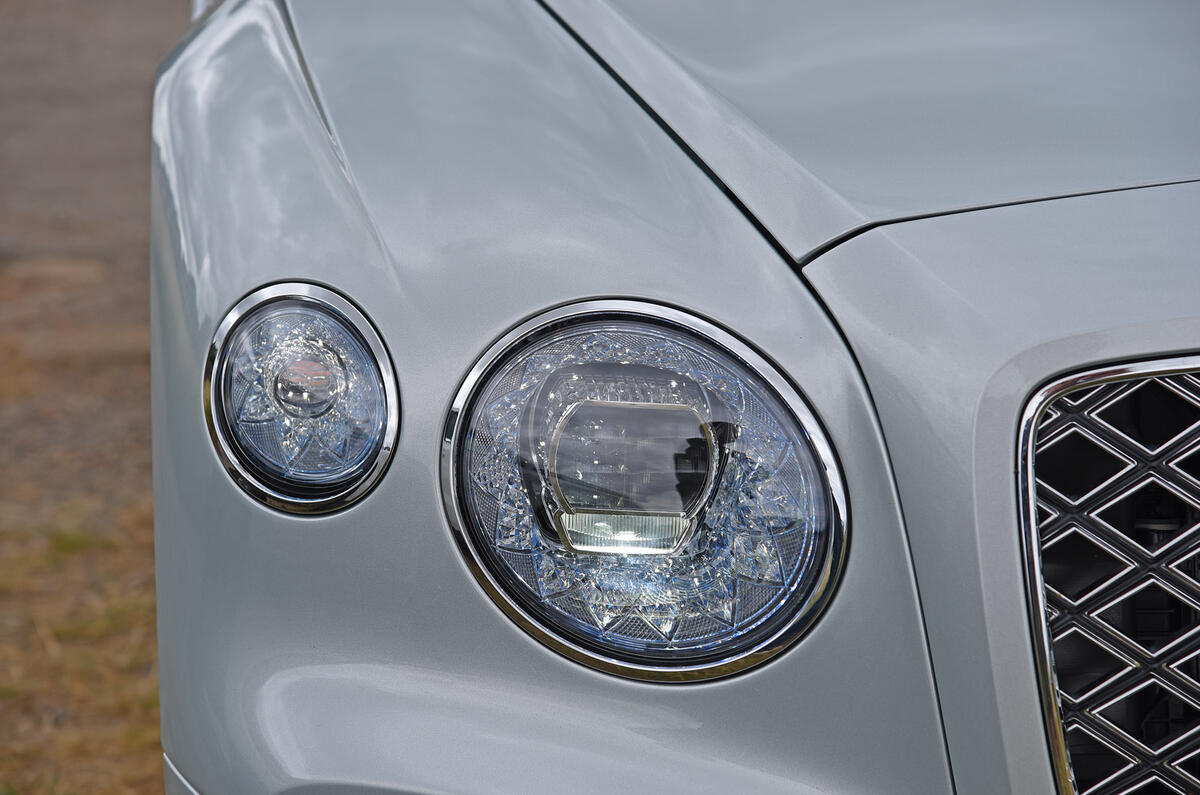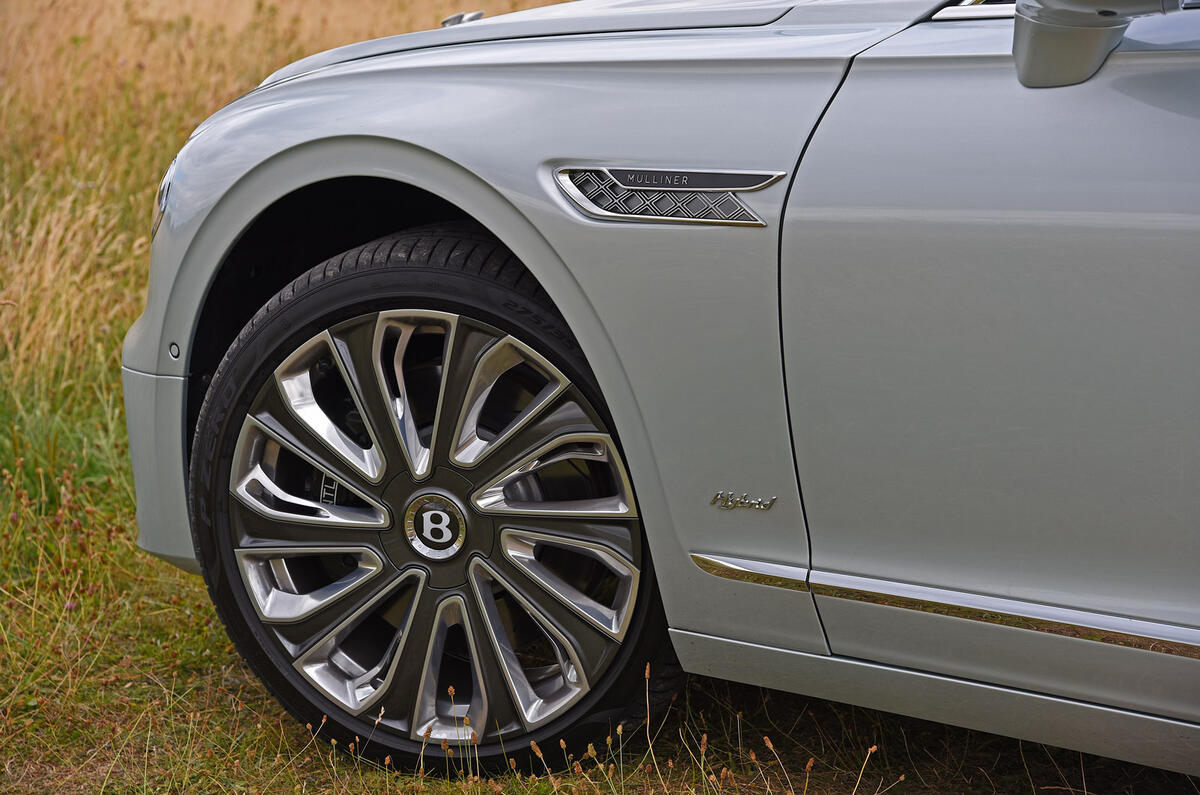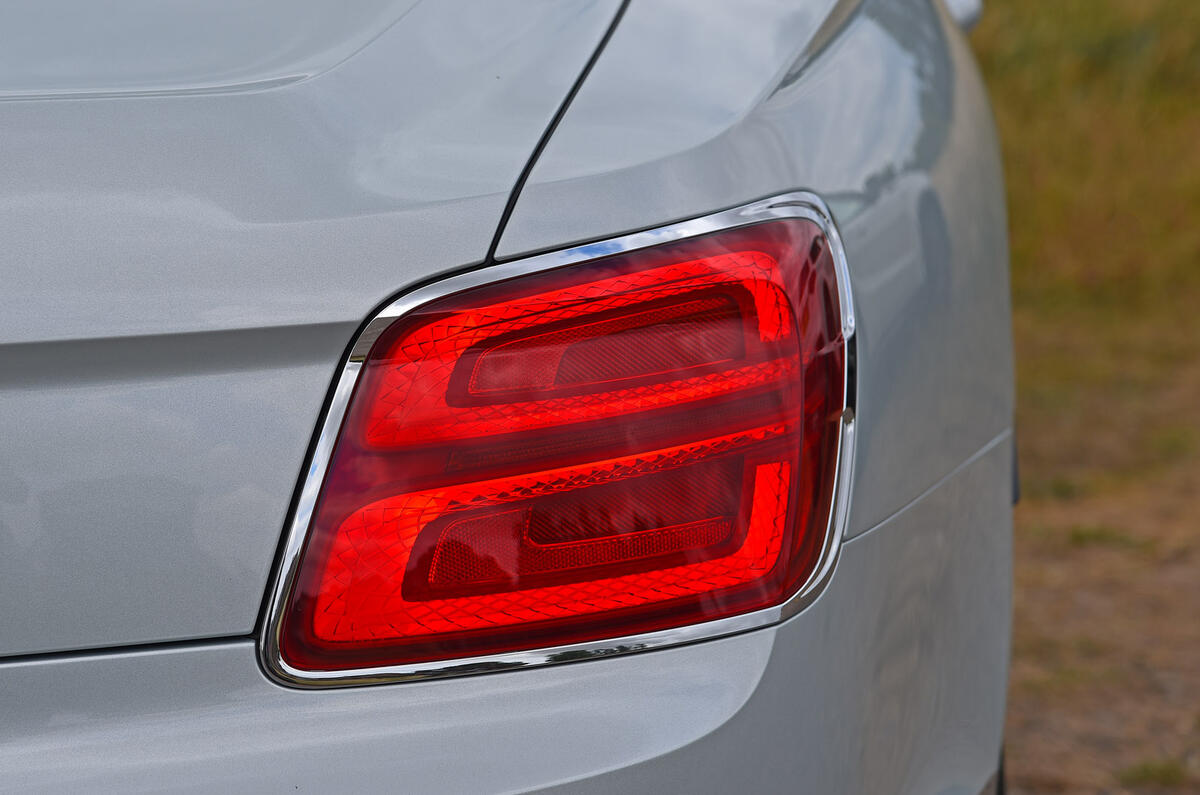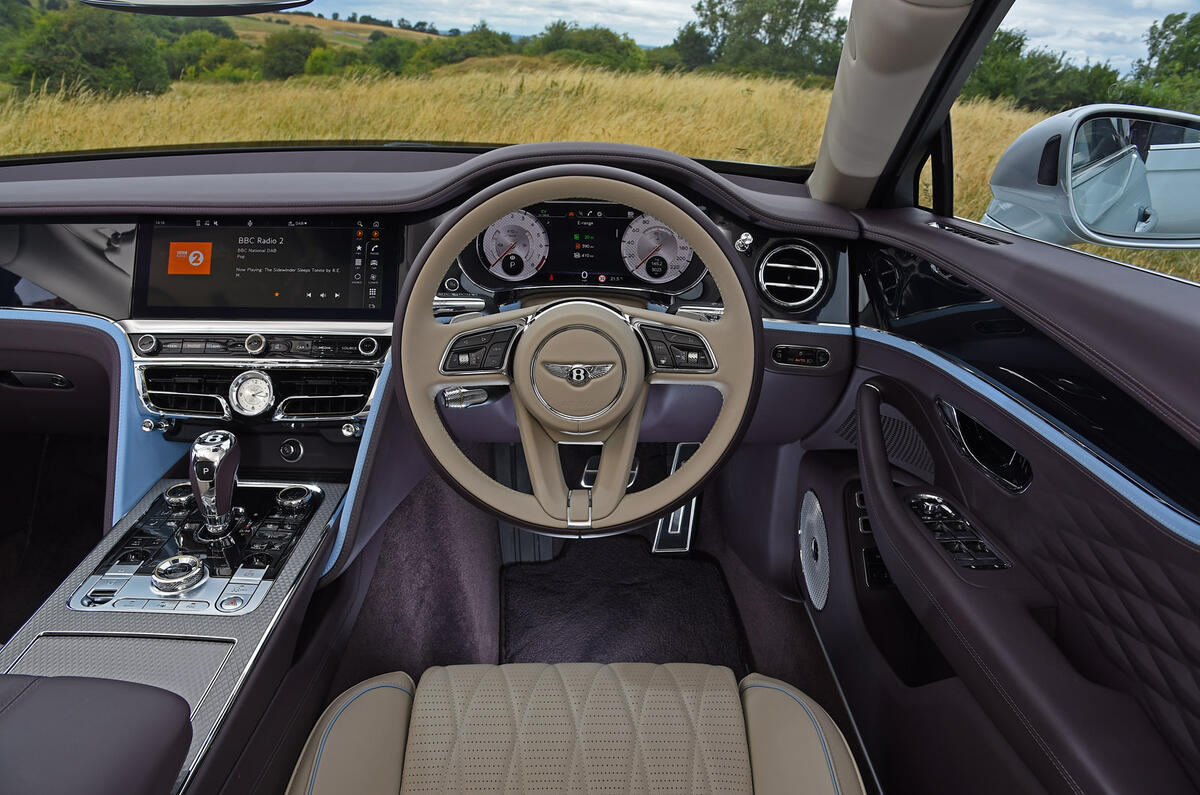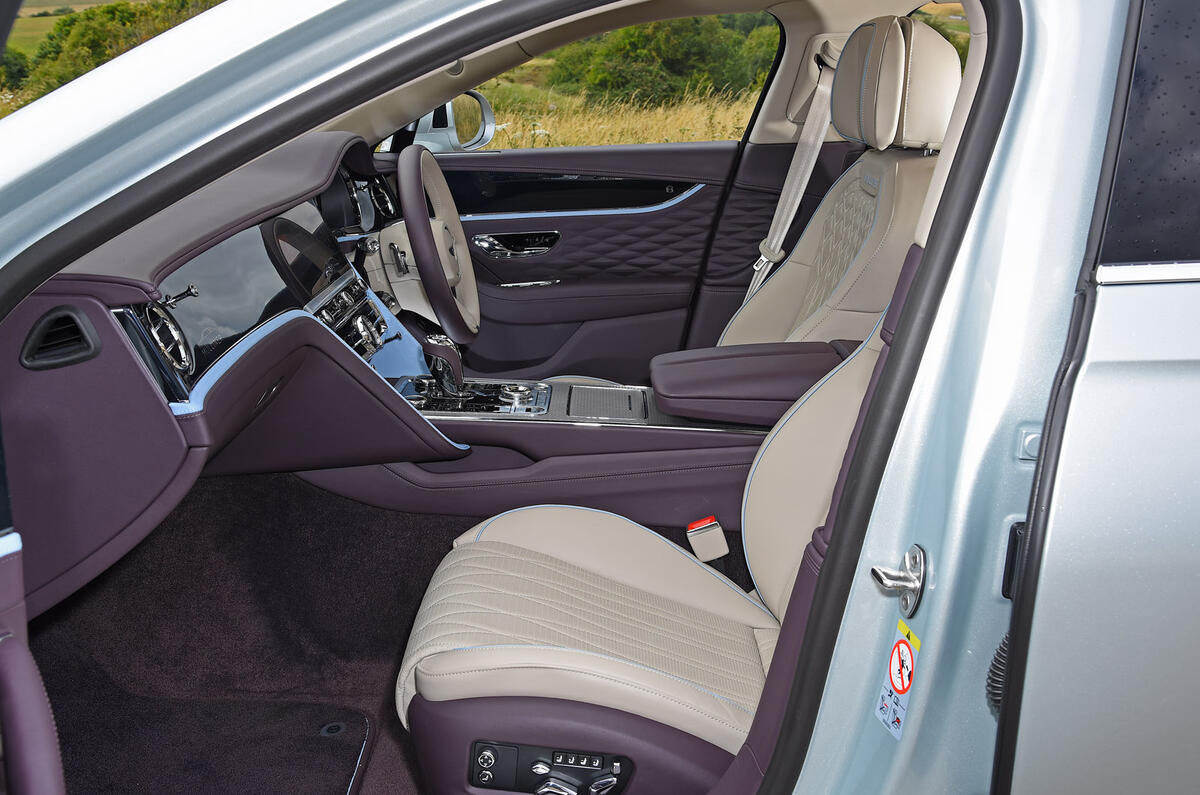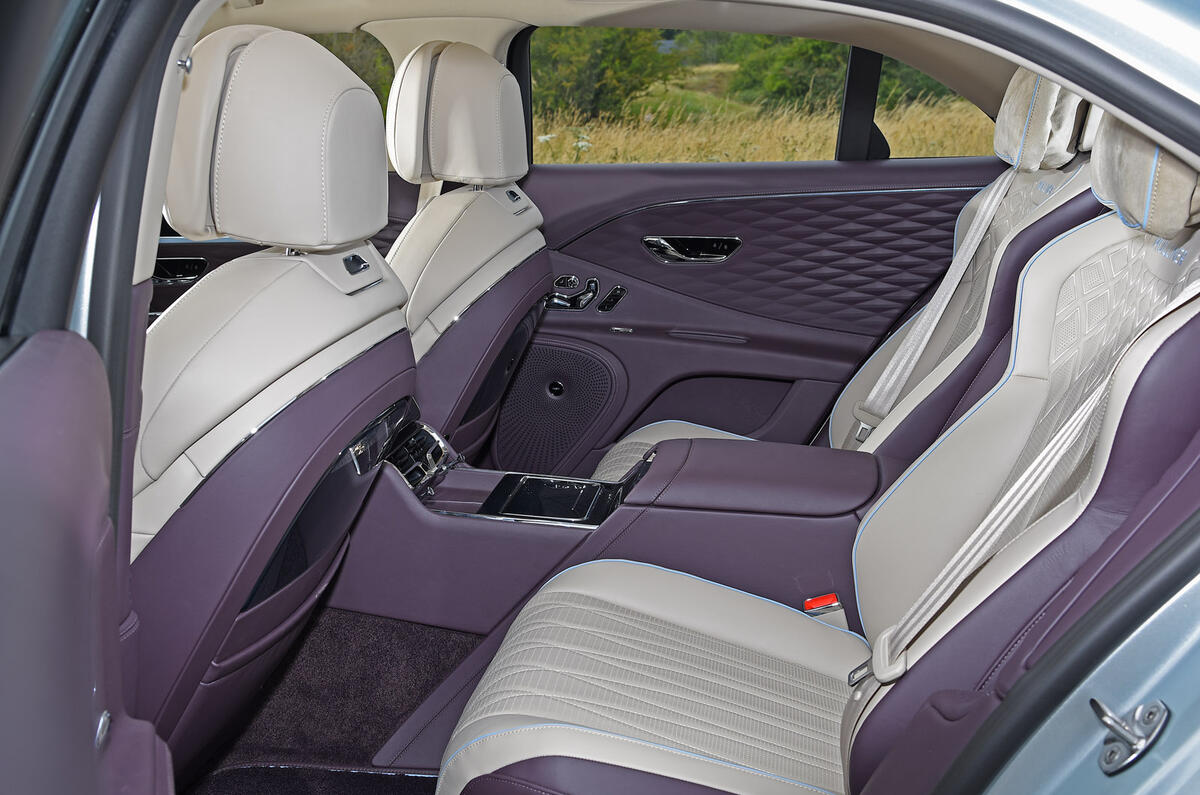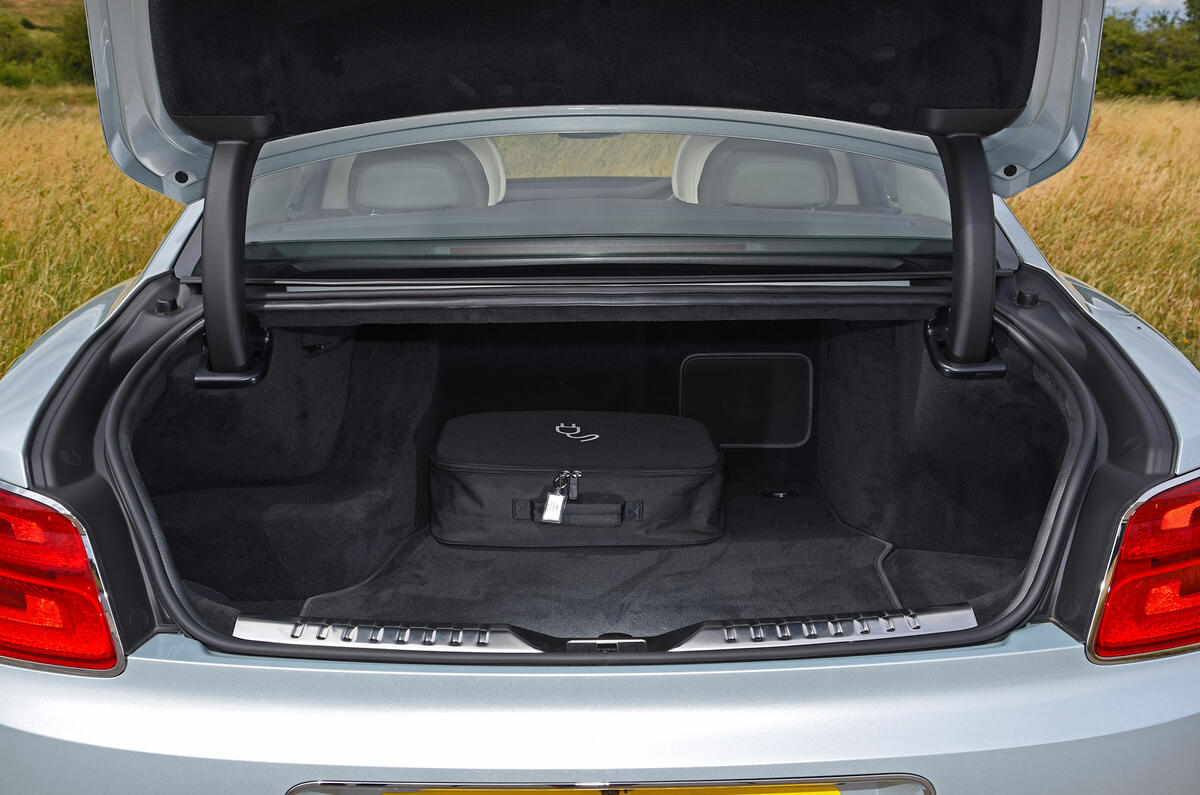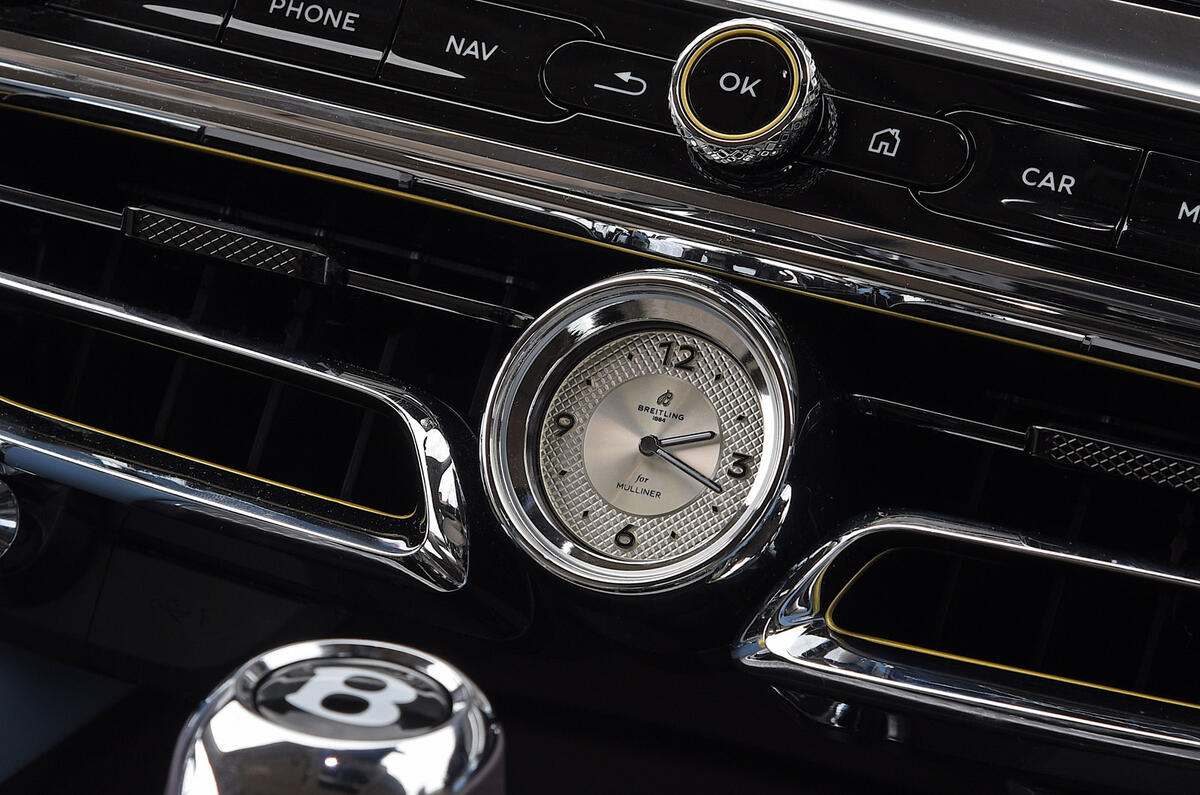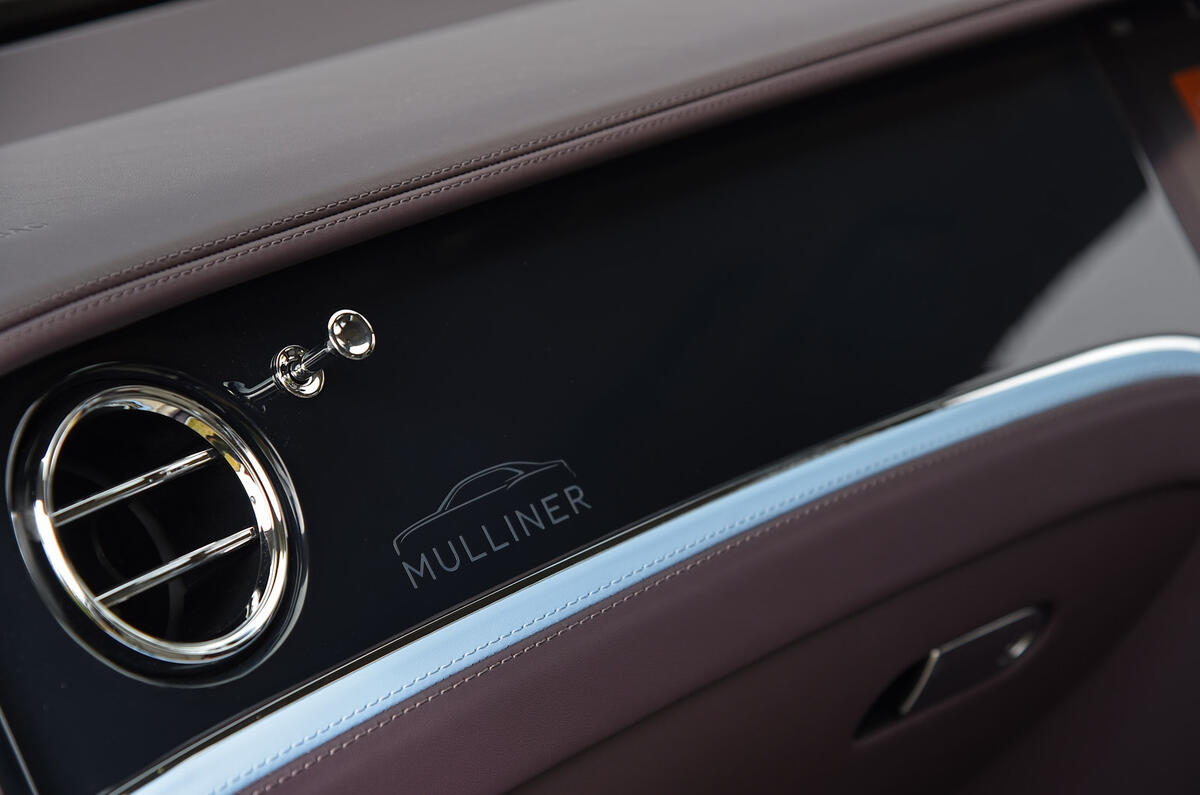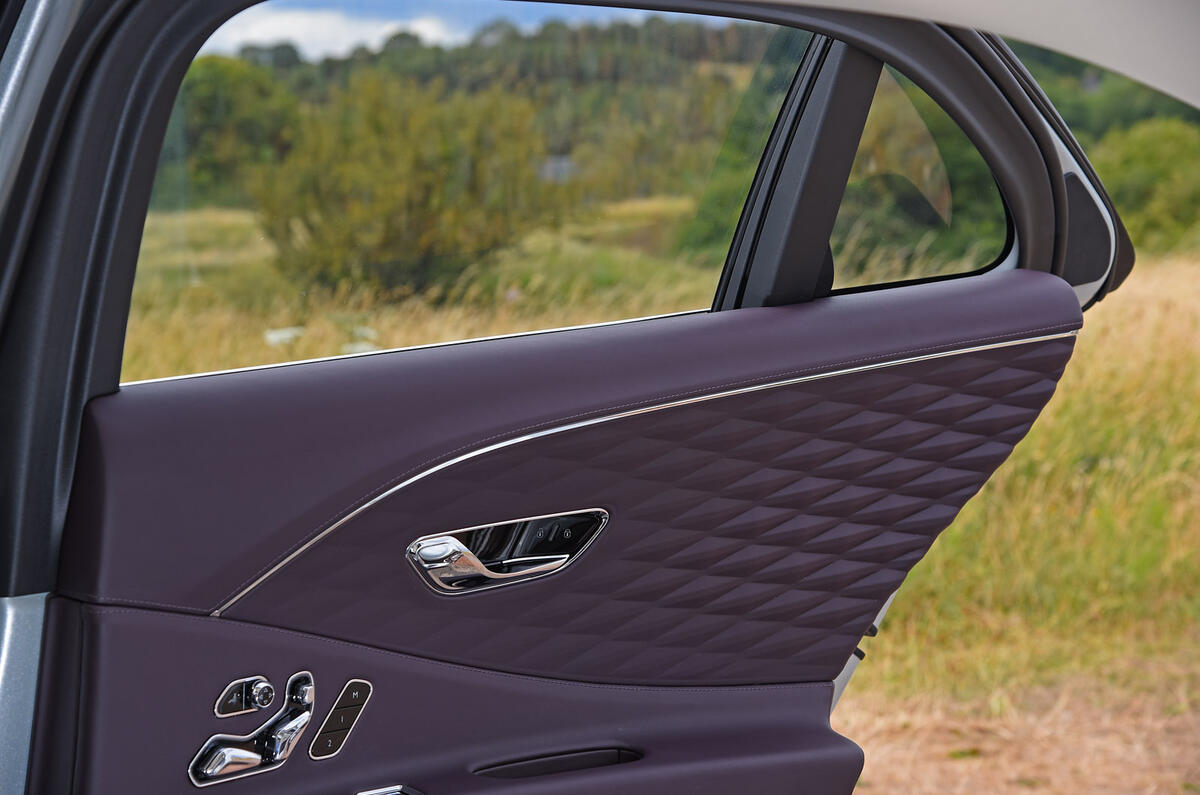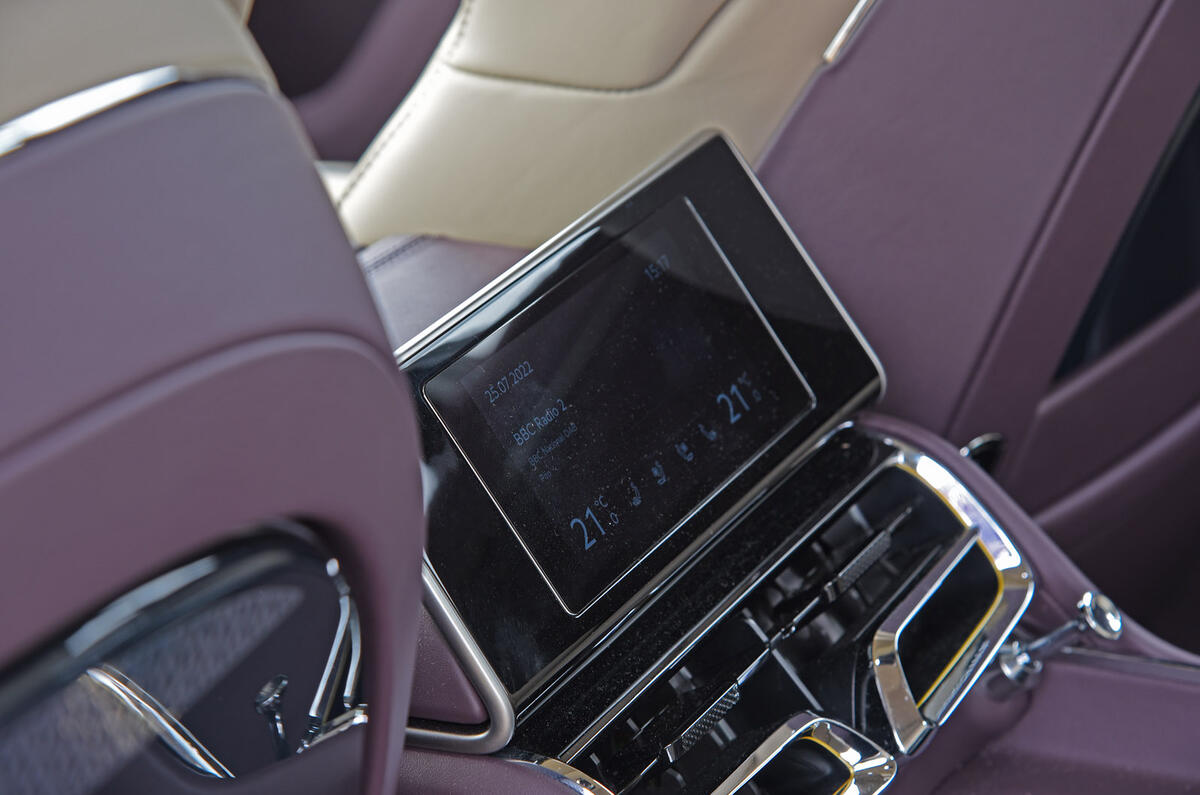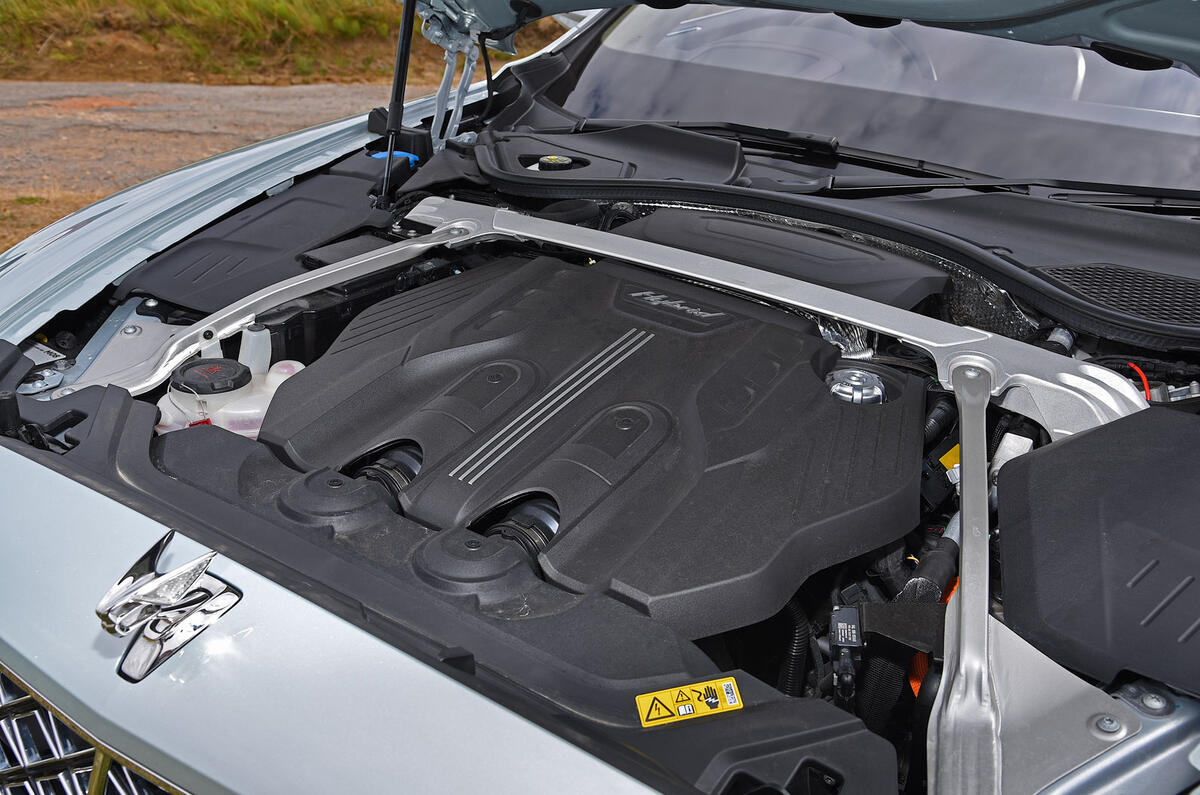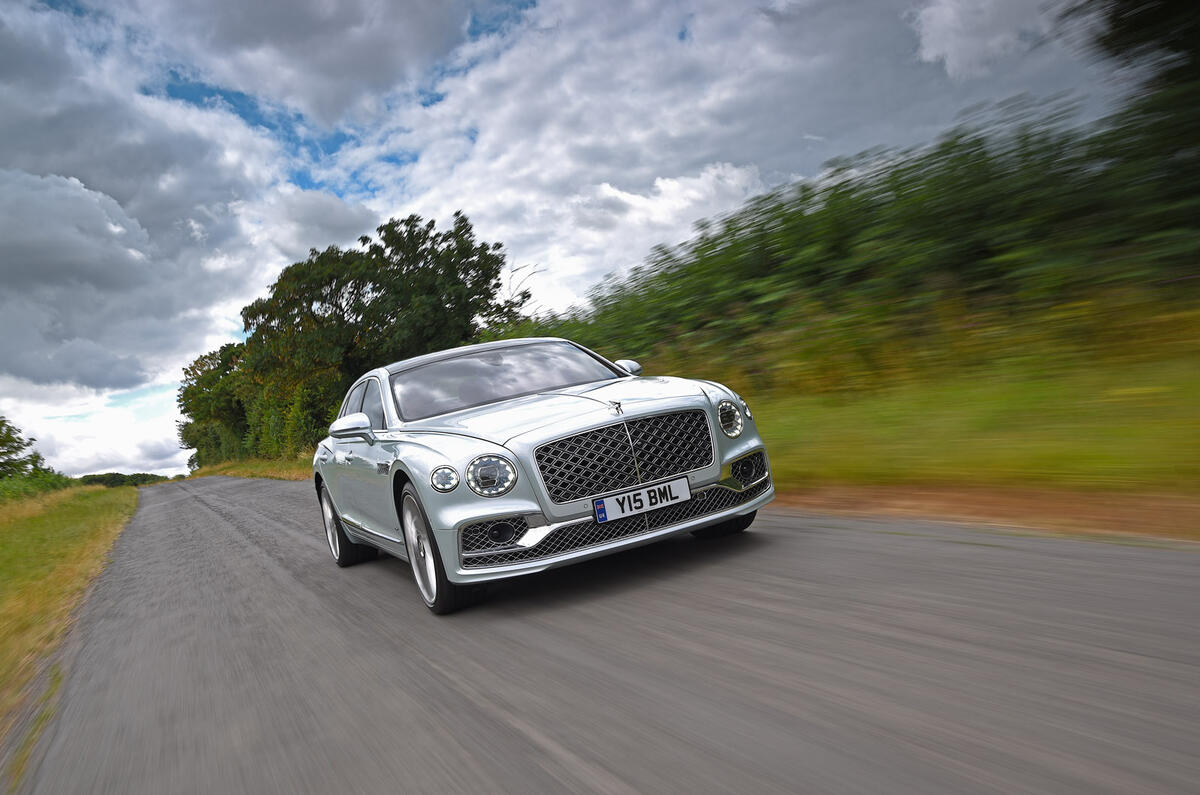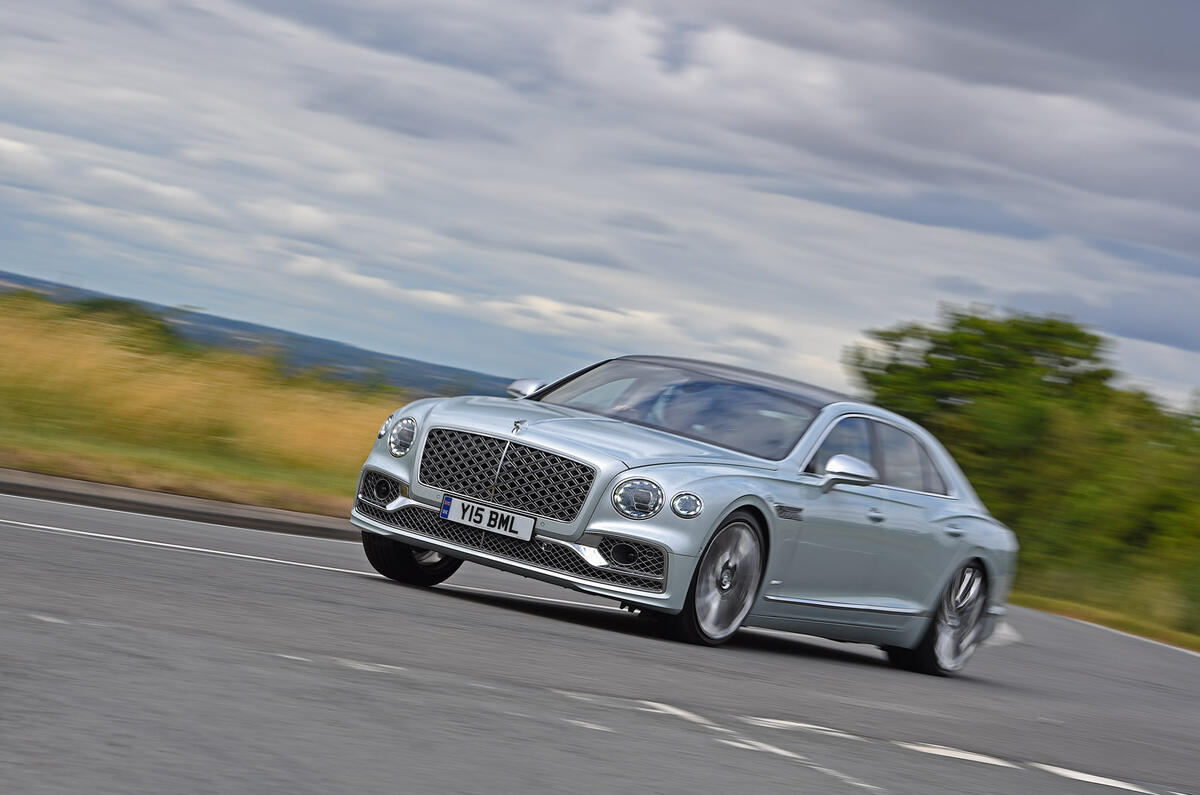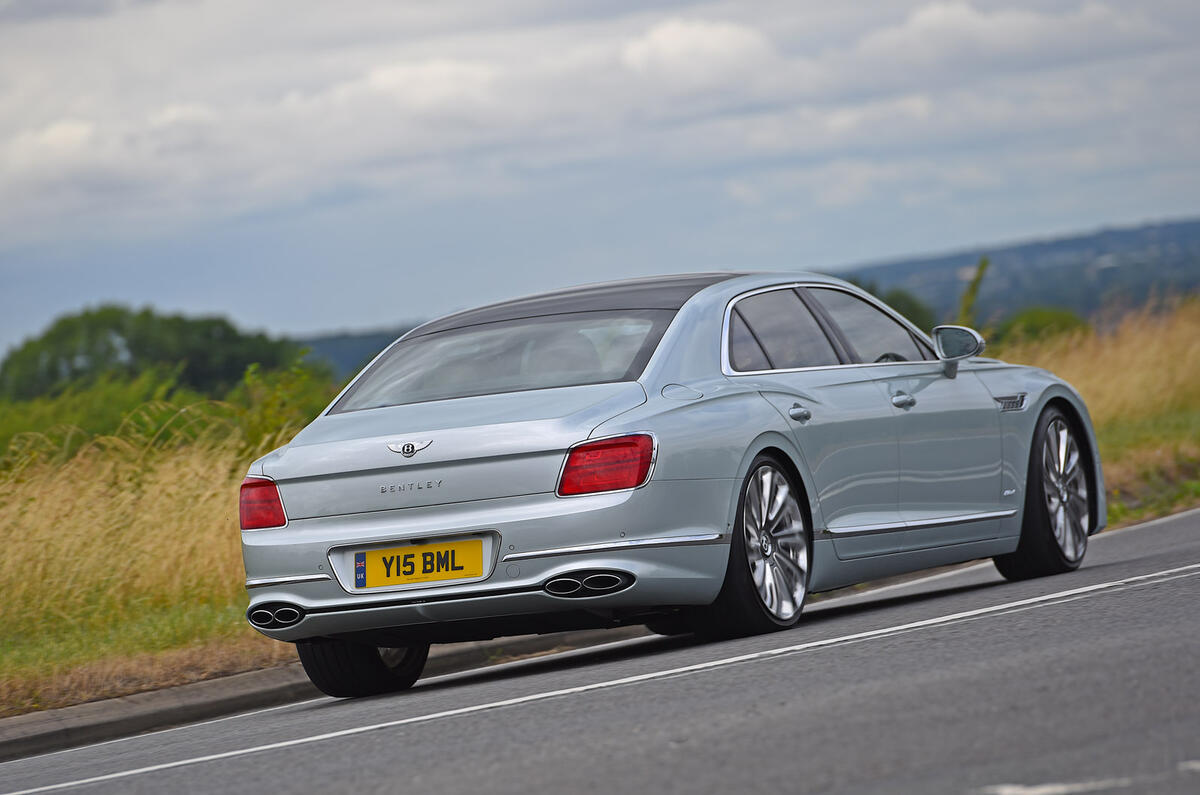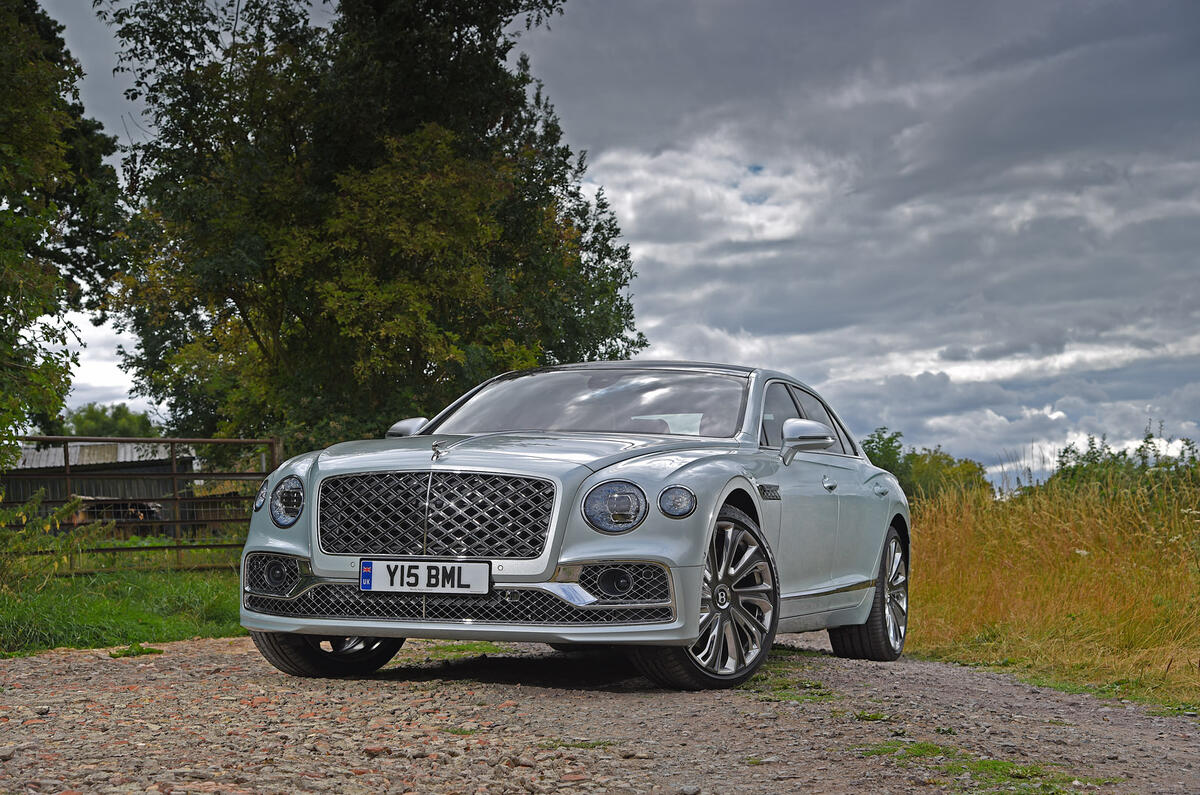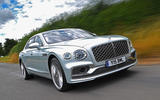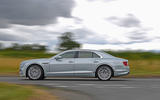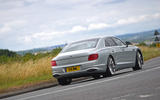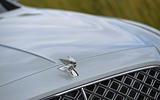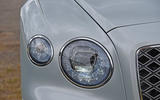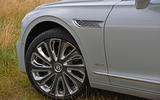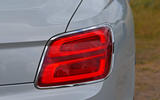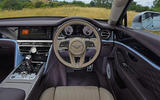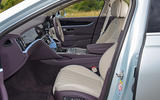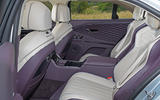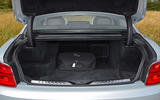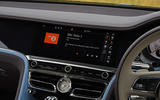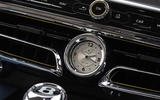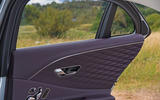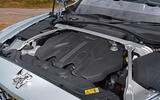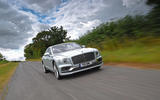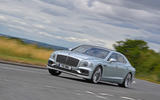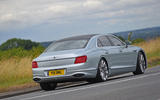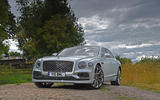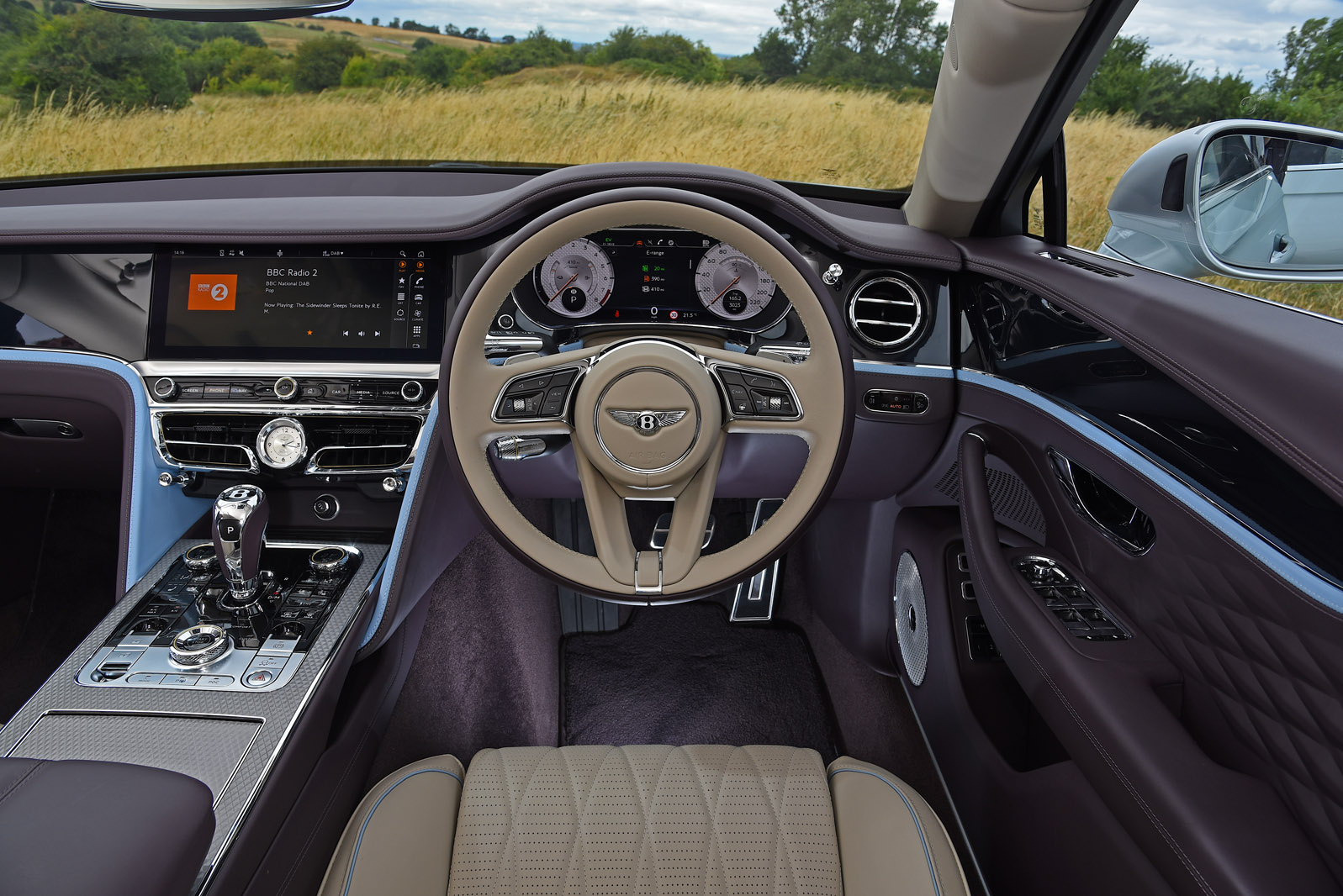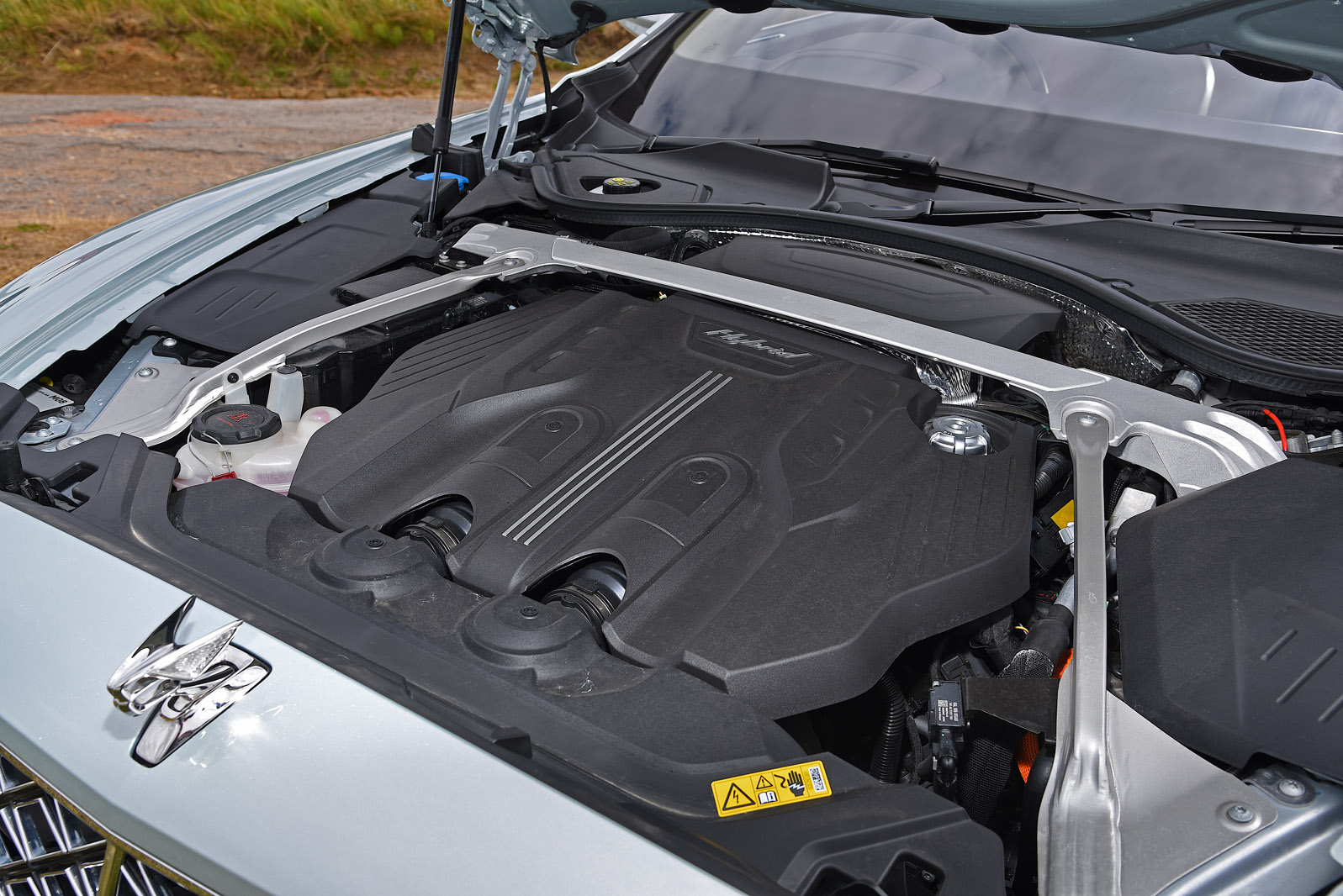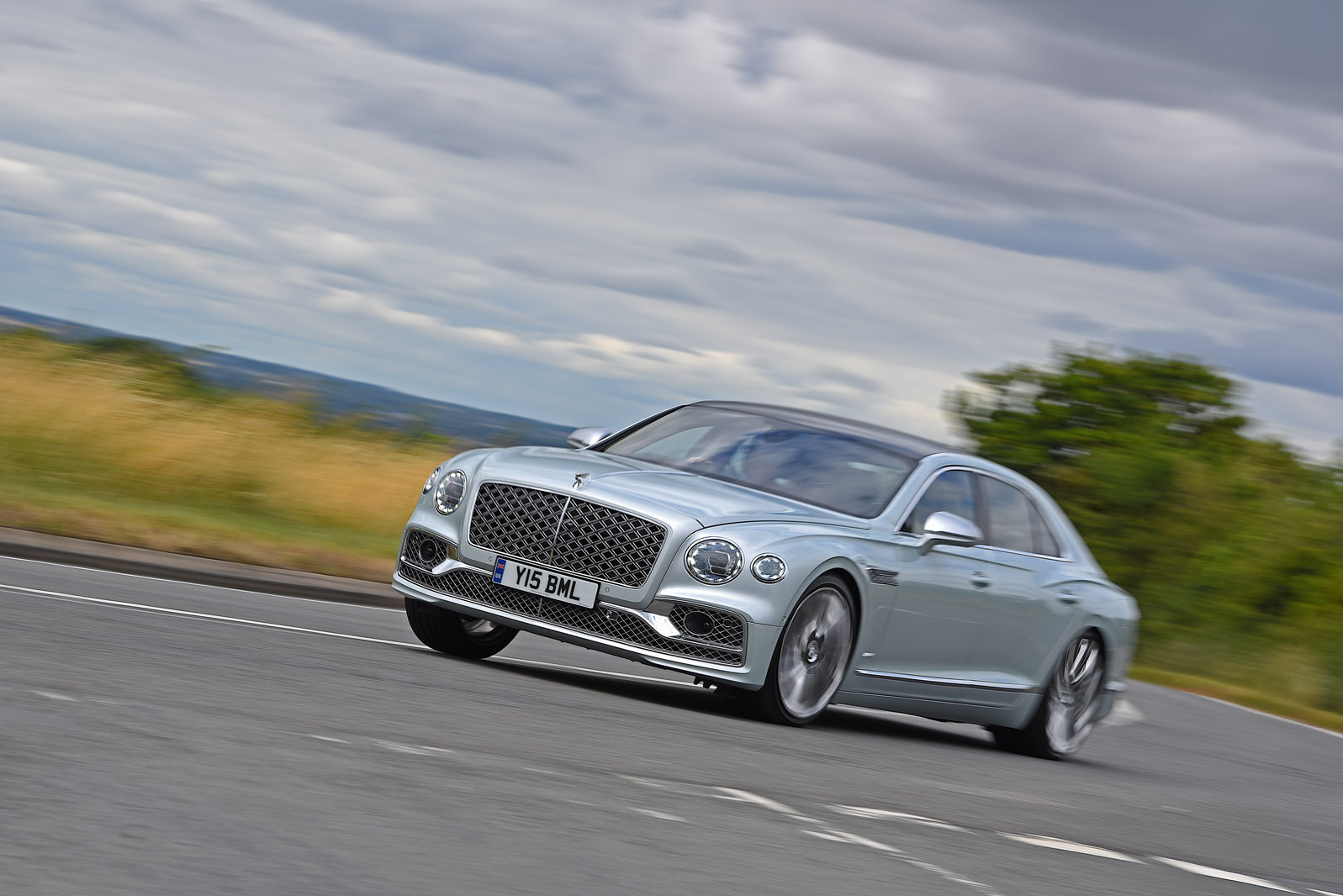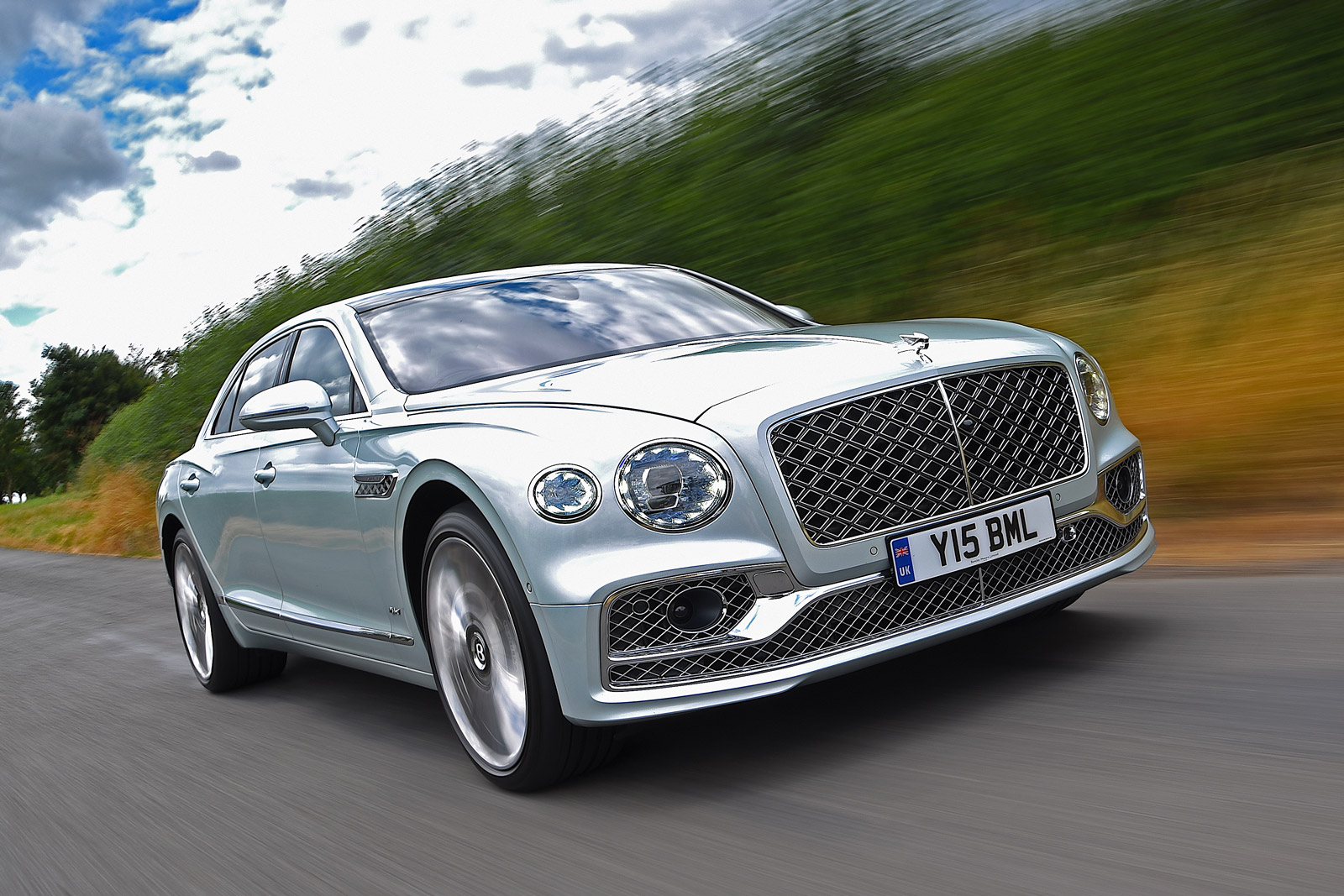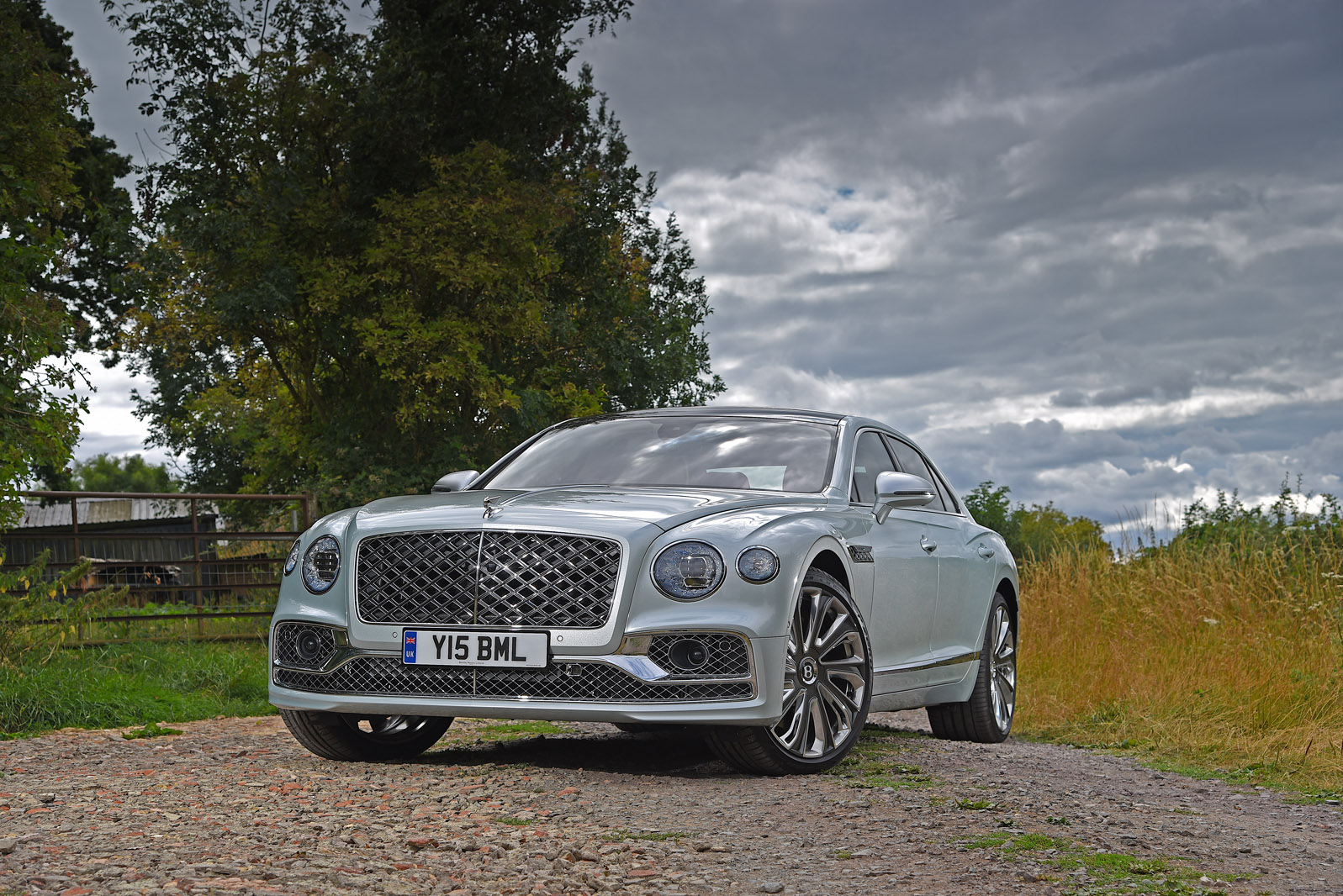The Bentley Flying Spur Hybrid can be ordered as a conventional five-seat saloon or with individual and adjustable lounge-like rear chairs and an extended centre console between them, as with our test car. This four-seat layout adds a note of extra exclusivity and lavish comfort to an interior that’s very hard to find an equal for. Its objective material richness and expensive tactile feel are both sky-high, but more subjectively, our testers agreed that this is also a car of superbly inviting, enveloping and genuinely relaxing ambience, rather than looking or feeling in any way stiff, formal or overly grand.
Entry is done via a fairly low bend of the hips and a careful inward sweep of your head to avoid what is a low roofline for a full-size limousine. Once you’re in, head room isn’t quite as generous in either row as some taller occupants might like. It’s tighter in the back than the front, of course, although Bentley’s optional Comfort Specification power-adjustable rear seats do allow you to recline your backrest and to trade a little generously provisioned leg room for head room – so even if you’re taller than 6ft 2in, you’re unlikely to complain about the available space.
With the four-seat cabin layout, the typically important people in the back also get a wireless charging pad and several wired power outlets; a heated central armrest with plenty of storage space beneath it; cupholders, seat heaters and coolers, personal climate control zones and ventilation ducts of their own; an infotainment touchscreen of their own; and beautifully veneered, electrically folding tables. Our test car didn’t have display screens in the back, but they could have been added at extra cost.
Opting for Mulliner trim brings special wood veneers, design details and embroidered features; different colour combinations of leather; and some special ambient ‘mood lighting’ features that are typically discreetly deployed as to be a delight when you discover them after dark. The interior brightwork feels uniformly tactile and expensive to the touch, even when it isn’t diamond-knurled. The rotating main infotainment screen is easy to use, but it’s also wonderful to be able to simply ‘put it away’ when you don’t need it. And the digital instruments, with their new hybrid-specific gauges and features, juggle readability and visual appeal cleverly.
In the boot, there’s a little less space than a regular Bentley Flying Spur offers: 420 litres is cut to 351. That’s compact-hatchback-level boot space really, and when you have several big flight cases to carry or bigger cargo boxes, it might conceivably leave you disappointed and embarrassed. It would be unlikely to dim the considerable appeal of ownership much on a daily basis, though.
Multimedia system
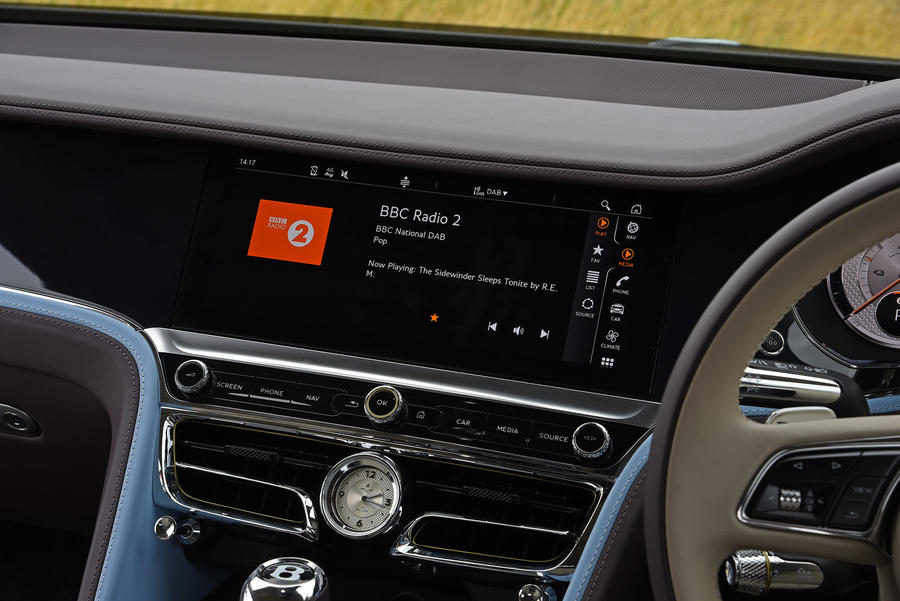
Bentley seems to be regarding the touchscreen-dominated interior design revolution going on elsewhere in the automotive world with a dubious eye. The Flying Spur’s 12.3in rotating system hasn’t changed much since 2020 and is still easy to navigate, thanks to its column of shortcut menu buttons. It’s slower to respond than some luxury-market systems but not disappointingly so. It also has new connected features for the Hybrid, thanks to a fully embedded data connection, so you can remotely access the car from a smartphone app to check particular information and features.
The sound system has 60GB of built-in music storage, 650W of power and 10 speakers as standard. There’s an optional 1500W premium system from Bang & Olufsen or a 2200W 19-speaker system from Naim, which our test car featured and whose power and clarity were both brilliant.
The sat-nav system’s voice recognition doesn’t yet recognise natural speech as well as some, though. Destinations have to be spoken somewhat unintuitively (town, road, house number) in order to be recognised.

